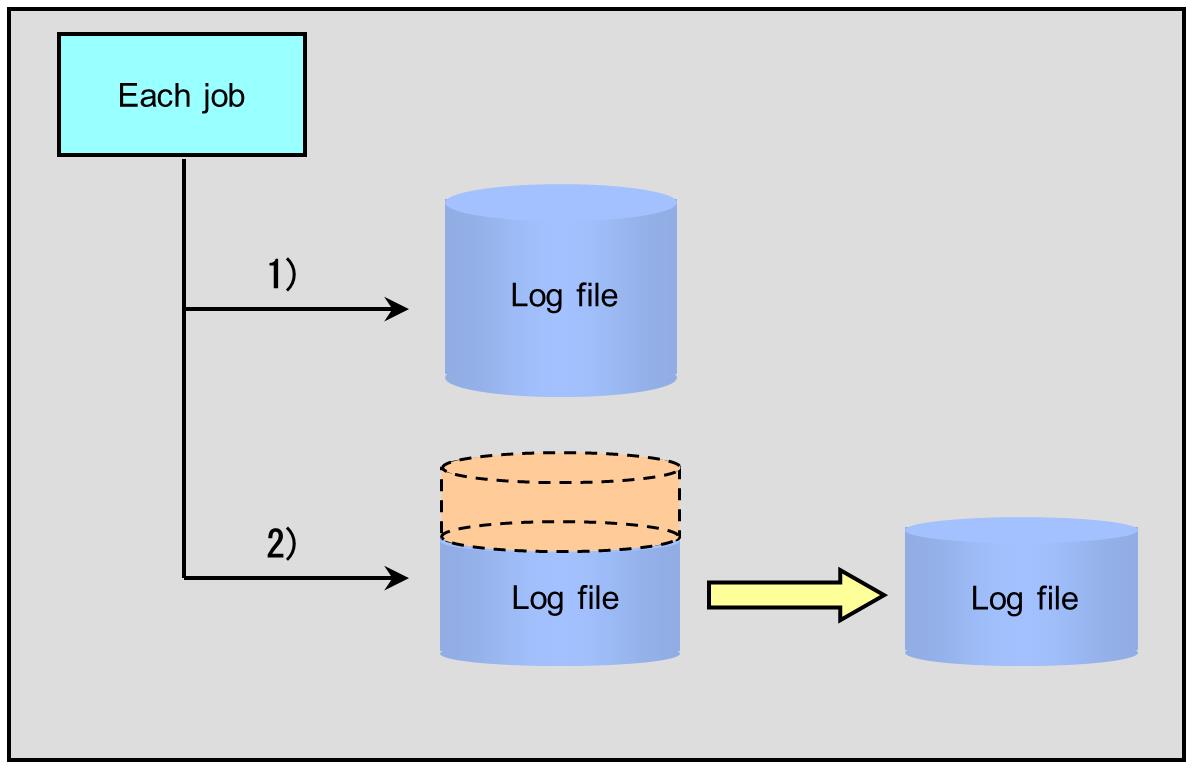Operations with automatic deletion of log records
You can delete old records automatically when the number of records in each log file exceeds the threshold. As a result, the size of the log file will not increase beyond this fixed size.
-
The Send job checks the number of log records each time when it outputs records to the Send Log, and deletes old records and records in the Post-Send Job Execution Log linked from the old records when the threshold is exceeded.
-
The Receive job checks the number of log records each time when it outputs records to the Receive Log, and deletes old records and records in the Post-Receive Job Execution Log linked from the old records when the threshold is exceeded.
-
The Observe job checks the number of log records each time when it outputs records to the Observe Log, and deletes old records when the threshold is exceeded.
The threshold is set by the Log Deletion Threshold (LOGDELCOUNT) of the System Environment Settings. For the System Environment Settings, refer to System Environment Settings.
The flow of log deletion processing is explained in Figure 2.38 .
1) Checking the record count
After the output of log, each job checks the count of log files.
2) Deleting records
When the count of log files exceeds the threshold, each job deletes old records.
When you carry out the Sending processing, the Receiving processing or the Observe processing after reducing the currently-operated set value of the Log Deletion Threshold (LOGDELCOUNT), some log records, which are supposed to be deleted, still remain in your log file.

Figure 2.39 Log Deletion Threshold
If some deleted log records still remain, run the RGZPFM (reorganize physical file member) command of IBM i with the following target files specified to remove the log records:
|
Processing |
Target Files |
|---|---|
|
Sending-side transferring |
Send Log file (SNDLOG) Post-Send Job Execution Log file (EXECLOGS) |
|
Receiving-side transferring |
Receive Log file (RCVLOG) Post-Receive Job Execution Log file (EXECLOGR) |
|
Observe processing |
Observe Log file (REQLOG) |
Small number of deleted log records remain while you are doing usual operation, yet you may leave them as they are unless they do not put pressure on your log files.
